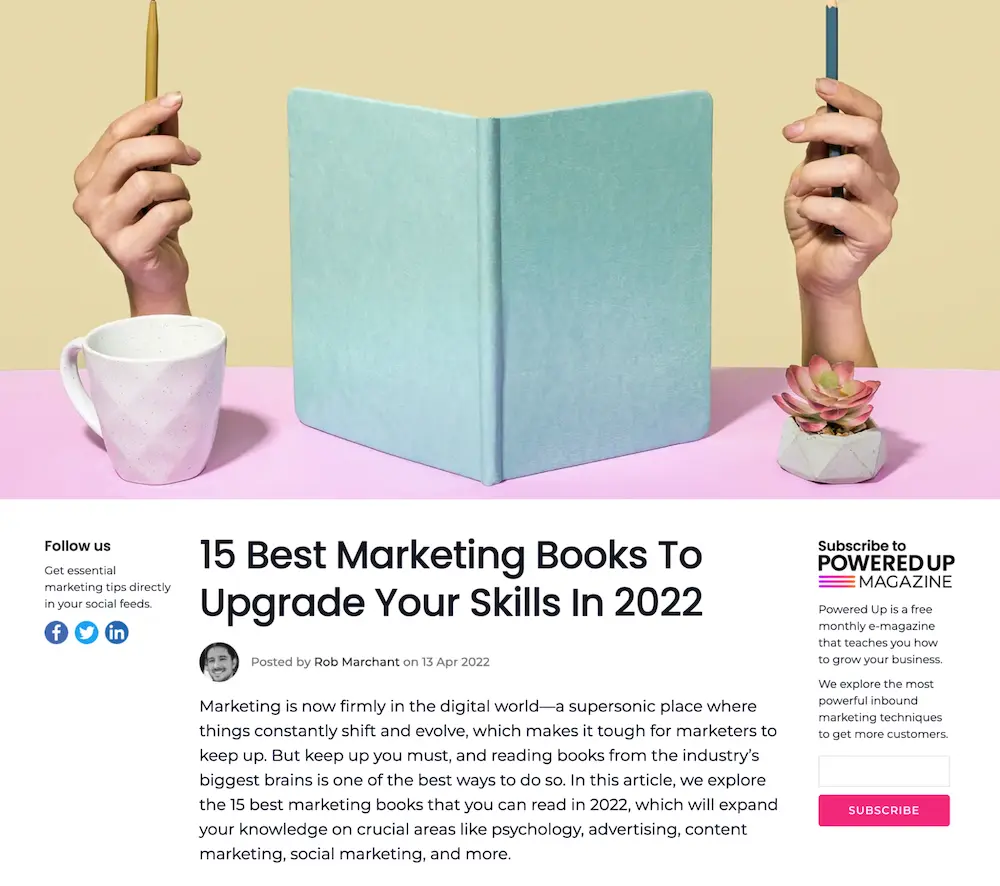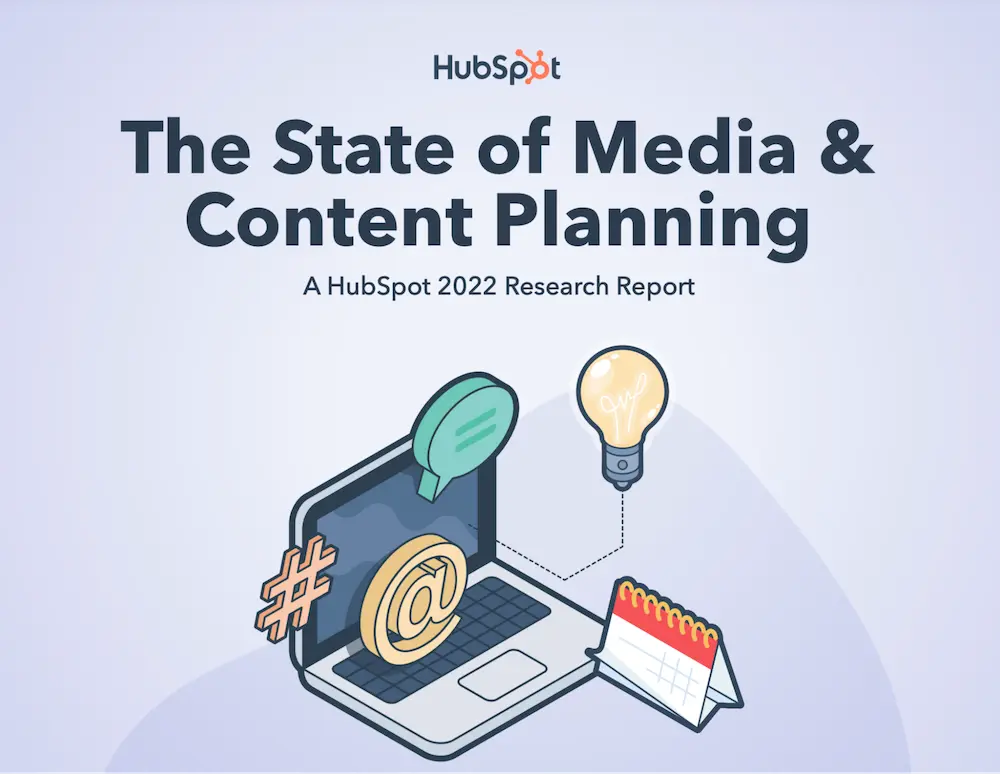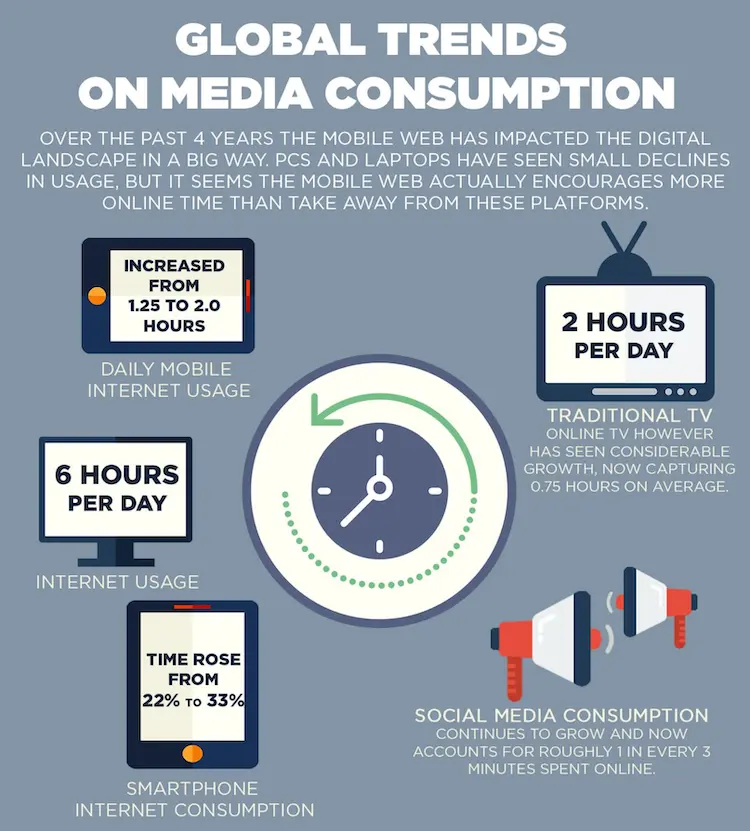What Is Digital Media? Win Customers With A Digital Media Strategy
You don’t have to be that old to remember a time before computers. If you’re in your late 40s, you may have listened to your fair share of analog radio programs, watched plenty of analog TV shows, and read a few books made of actual paper.
Things are different today. Computers and the internet have transformed how we consume media, which is mostly sent to us through our smartphones, computers, and televisions in the form of digital media. But what is digital media, exactly? And as a marketer, how does it change the way you engage with your customers?
Let’s find out.
What is digital media? And why is it important for businesses?
Digital media is any kind of media that is broadcast through a digital device, such as a smartphone, computer, or modern television. It comes in a variety of forms such as text, imagery, sound, and video, which we might read, look at, listen to, and even interact with. The purpose of digital media varies too, and can be educational, promotional, entertaining, or a mixture of these.
Digital media was made possible by the invention and popularity of computers in the late 80s, which rocketed us out of our smoggy Industrial Age to a brand new era: the Information Age. The term “digital” is anything electronic, so any piece of media that is consumed on a computer (which includes your smartphone) is a piece of digital media. The internet quickly followed home computers, allowing digital media to be easily shared with millions of people for the first time, which led to an explosion of content that slowly transformed how we consume media in our day to day lives. Physical newspapers are largely swapped in favour of news websites, Blockbuster video has been soundly beaten by streaming services like Netflix, and analog radio has been dwarfed by giants like Spotify, Apple Music, and YouTube.
In fact, digital media has been a powerful disrupter for a large number of industries. Entertainment, education, publishing, journalism, commerce, public relations, and even politics have been drastically altered by its awesome power, made possible by cheaper and better televisions, computers, and smartphones. We can now access digital media at any time of the day, wherever we may be, which provides incredible opportunities for businesses who want to promote their brands. It’s also changed how we buy things, allowing us to get information about products and services on our own terms, rather than being at the mercy of advertisements, commercials, and salespeople.
The last point is a crucial one for marketers and business owners. Digital media is now the backbone of the modern marketing strategy, with content like social media posts, videos, and high-performing websites overtaking traditional media like printed adverts and direct mail.1 Digital content is cheaper to produce and circulate, and easier to measure through software tools like Google Analytics. It’s also necessary—a modern business that doesn’t promote themselves digitally may as well be invisible. When we talk about marketing today, what we’re usually talking about is digital media marketing. It’s how we experience brands from day-to-day, through their websites, social posts, stories, tweets, commercials, and everything in between.
Thankfully, digital media marketing isn’t just for the big boys. Its lower cost has helped to level the playing field for smaller businesses. Big advertising budgets are no longer necessary to outshine your larger competitors, who can be trounced on affordable platforms like Facebook or Google with their gargantuan audiences and precise targeting tools. Good quality videos can be produced on just a smartphone, and then “replicated” infinitely by being shared through social media. Educational content like blogs can also be created and shared directly on a company’s website, rather than as a paid placement in a newspaper or magazine. This is just a few examples from thousands. Marketing through digital content is cheaper, easier, and given that it can reach pretty much anyone with an internet connection, has immense potential for companies who want to promote their brand and sell their products or services.
Today, a modern marketer can do the following to help achieve the goals of their business:
- Create, share, and modify media easily. They may use Google Docs to write blogs, Photoshop to produce adverts, and Premier Pro to edit videos. They’ll share the media through their website, social channels, and email lists, providing instant access to potentially massive audiences. This accessible and often easy-to-use software gives them a huge productivity boost compared to traditional forms of media.
- Reach vast numbers of people through social media and search engines. Billions of people log onto social media each day, and similar numbers use search engines like Google to find information. By producing content that those people want, you can attract their attention and make them aware of your brand. Produce enough of it, and they might become interested in your products, resulting in a new lead or sale.
- Target the right people accurately with digital adverts. Google and Facebook make most of their billions from advertising. They keep profiles on each of their users, which can contain information like their location, age, gender, and interests. They then use this information to accurately target people with their customers’ adverts. That’s why Google Ads and Facebook Ads are two extremely cost-effective ways to reach your customers.
- Boost customer loyalty and retention by providing high quality media. Put simply, customers will trust and respect your company more if you regularly produce content that they want. You’ll not only be helping to solve their problems, but also demonstrating that you clearly know your stuff, and that they would do well to use your services if they should need them.
- Boost brand awareness by keeping in sight. Many of us consume so much content that it’s become easier for businesses to remain in sight through quality digital media. When combined with excellent branding, a business can boost their brand’s awareness massively.
Companies from every industry can use digital media to connect with their customers and boost their revenue, even industries like agriculture, cleaning, trades, and waste management. Good content is good content, and people will happily consume if it’s something they want or need. It’s the reason that Netflix, Sony, Disney, and other media companies are now some of the biggest in the world.
Types of digital media
These are the most common types of digital media that people consume on their devices:
- Text—words remain a primary way for us to communicate, so you’ll find plenty of digital media in the form of text. This includes website content, blogs and articles, news, eBooks, instruction manuals, and much more.
- Imagery—before the digital age, image media could be found in places like art galleries, magazines, and on billboards. Today, we consume much of our image media as memes, digital adverts, and website content.
- Video—you only have to consider the size of Netflix and YouTube to realise the insane popularity of modern video media. We also consume billions of videos on social platforms like Instagram and Tiktok, company-produced webinars, and explainer videos that help us to understand a company’s services. If you’d like to use video in your marketing, check out this handy video marketing checklist from Breadnbeyond.
- Audio—pure audio media used to be played through vinyl or cassette, or was heard through an analog radio. Now it’s usually consumed through popular streaming services like Spotify, in the form of music and podcasts. Or we might listen to audiobooks through a service like Audible.
- Mixed—of course, media isn’t restricted to a single format, but can use a combination of text, video, audio, and interactivity to create websites, video games, Twitch streams, and an unfathomable number of other possibilities.
Types of digital media might also refer to the following groups:
- Paid media—media that is advertised on promotional channels like Google, social media platforms, television, and radio.
- Owned media—media that is advertised on a company’s own channels, like their website.
- Earned media—media that is owned by a company but has been shared by others, usually on social media platforms.
Digital vs print media
In the battle of digital vs print media, which is best? Neither, it turns out. They can both be highly effective ways to promote a business, and supplement each other to create something truly powerful.
We are bombarded with digital media these days, which makes it harder for brands to get noticed. The number of digital adverts we see each day (consciously or unconsciously) is astounding, and over time, we naturally become better at blocking them out. So when we receive a creative advertisement in the mail, see one printed in a magazine, or watch a particularly entertaining advert on TV, we are more likely to notice it because they are a little more rare. Physical marketing that we can see and touch is suddenly novel again, and we may not have the fatigue that we experience when seeing a website pop-up for the fourth time that day.
Because anyone with a computer and some software can create a digital advert, print media can also appear more trustworthy to consumers. It costs a lot more to send out a direct mail campaign, publish an advert in a magazine, or publish a book, which gives it more credibility. On the down side, customer targeting is usually trickier with print, and there’s no way for people to interact with it (like completing a web form). It’s also harder to track the campaign’s success, because there’s no computer saving all of the customer’s juicy data.
Digital media has its pros and cons too. It can be created, published, and edited super quickly, interacted with, and is also more eco-friendly. But it’s also less credible, interruptive, and the sheer amount of it may even be affecting people’s mental health, although it’s difficult to determine causality for this kind of thing.
Digital media is still a very effective way to market, but print media can be too. If it works for you, you may want to consider creating a combination of digital media and print media campaigns, and carefully measure the performance to see which are working best for you. Print media will usually be a lot more expensive, but it’s the return on investment that counts. According to Top Media Advertising, combining print and digital adverts can make online campaigns 400% more effective.2
5 digital media examples for businesses
Digital media can be extremely creative, so we could list hundreds of digital media examples. But these are some of the more common forms of digital media that businesses use to win customers.
Blogs

If you aren’t already aware, a blog is what you’re reading right now! As an internet user, you’ve probably read thousands of them, and they are an excellent way to attract visitors to your site, improve your website’s SEO, build brand awareness and credibility, and more. We invest a lot into blogging because we know how effective it is—we’ve seen it work time and time again for our clients, with some astonishing traffic increases that help them achieve their business goals.
Blogs are primarily text-based, but they can also include other types of digital media like images, videos, and forms.
eBooks

An eBook is a downloadable resource that usually focuses on a particular topic that people want to learn about. It’s nowhere near as comprehensive as a physical book, but instead attempts to distil the most important information about something into a well-designed, readable PDF document. They are a “lead magnet” resource, which means that people usually have to provide their email address to receive them. The company who created the eBook can then market to that person, ideally sending them useful related content.
As with blogs, eBooks are mostly text-based, but will include plenty of colour and imagery to stamp the company’s branding on it.
Digital adverts
A lead generation advert that we ran last year on Facebook
Swapping screens for paper hasn’t reduced the effectiveness of adverts. Digital adverts are pasted across our social feeds, YouTube accounts, and Google result pages. They even follow us from website to website (known as remarketing). And they can work incredibly well if you know how to make them high-converting and effective. Check out how not to create them in our bad Facebook ads article.
There’s plenty of variety for digital adverts too. From simple text ads in Google to complex multi-image carousels in Facebook, there’s sure to be an advert style that will suit your goals.
If you’d like to learn how to accurately assess your adverts’ performance, we have two blogs you might like: social media advertising metrics to measure, and Google Ads measurement.
Explainer videos
An excellent explainer video from PandaDoc
We love watching videos online. By the time 2023 arrives, it’s estimated that about 161 million people will be watching some form of online video in America,3 so you can imagine the size of that figure for the entire world.
That’s why video marketing has become so popular of late, and explainer videos are just one example from this industry. These are videos that usually provide a quick overview on something fairly complicated, so that you can grasp the general concept, and decide whether it’s something that you’re interested in. They are often used to explain complicated software or other concepts that can’t be quickly described using text alone. The video will usually be short, simple, with plenty of nice illustrations, a voiceover, and some pleasant music.
Infographics

In our lightning-fast world, infographics are an easy and often beautiful way for us to consume useful information. They are usually focused on statistics (but don’t have to be) and are arranged in a well-designed graphic that is interesting and entertaining to look at. For this reason, they are extremely shareable, and may find themselves proliferating on social media.
Infographics are an excellent digital media resource, but they may require original research to be effective, which takes time.
Webinar
A webinar is an online educational event that is usually run and hosted by a single organisation, and aims to teach them about a particular topic. It’s the digital version of seminars, and often focuses on the organisation’s products or services. The webinar is run by a small group of people from the organisation, who run through slides and other demonstrations, and give others the chance to ask questions and find out more information.
Webinars are an excellent way to demonstrate the benefits of your products or services, especially if they are complex. They are a mixture of text, images, video, and other types of digital media.
What is a digital media strategy for a business?
A digital media strategy focuses on digital media as a way to increase revenue. Most modern marketing strategies include digital media in their campaigns such as adverts, videos, and blogs, so a digital media strategy is also considered a “regular” digital marketing strategy for modern businesses.
Quality content is the core of a digital media strategy. It focuses on creating highly effective content that the company’s target audience wants, needs, and enjoys, as a way to bring traffic to their website, boost brand awareness on social media, and achieve clear business objectives like increasing leads and sales. In fact, every piece of media that is created as part of a digital media strategy should be directly tied to the goals of the business, and measurable.
When creating a digital media strategy, you’ll need a good understanding of your target audience (which can be achieved through buyer personas). You’ll especially need to know the kinds of problems they have, the types of content they like to consume, and the places where they like to “hang out” online. You can then plan out the content topics and formats that will entice them, and work out which platforms you’ll be distributing them. You’ll also need to know how to measure each digital media campaign, and be diligent about doing so.
To execute this strategy, you need content creators like writers and designers, people who are able to publish the content through social media, websites, and other platforms, and people who can analyse their performance. You’ll also need someone to create the strategy of course, which usually falls to a marketing manager, or a Chief Digital Officer for larger companies. If you’re lacking a key skill like writing or design, outsourcing can be a viable option.
The speed of return for your digital media strategy will depend on the campaigns themselves. Campaigns like adverts can be quick, attracting customers into your realm immediately. But other types of media like content marketing may be slower, as it takes time to build authority through search engines, as well as an engaged audience. Ultimately, if you know your audience well and have the capabilities to produce consistent, high-quality content, people will quickly become aware of your company, and start to trust your insights. Eventually, they might decide to buy from you.
What is digital media—summary
So what is digital media again? To summarise, it’s any kind of media that we consume on our phones, computers, televisions, and other electronic devices. And we consume a lot of it, which is why it’s such a crucial part of marketing for 20th century businesses. By creating media that your customers want and need, in a format they enjoy, and to the platforms where they like to spend their time, you have a delicious recipe for success.
References
- 2022, Time spent with digital vs. traditional media in the US 2023, Statista
- Top Print Advertising Statistics and Effectiveness, Top Media Marketing
- L.Ceci, 2022, Online video usage in the United States, Statista



